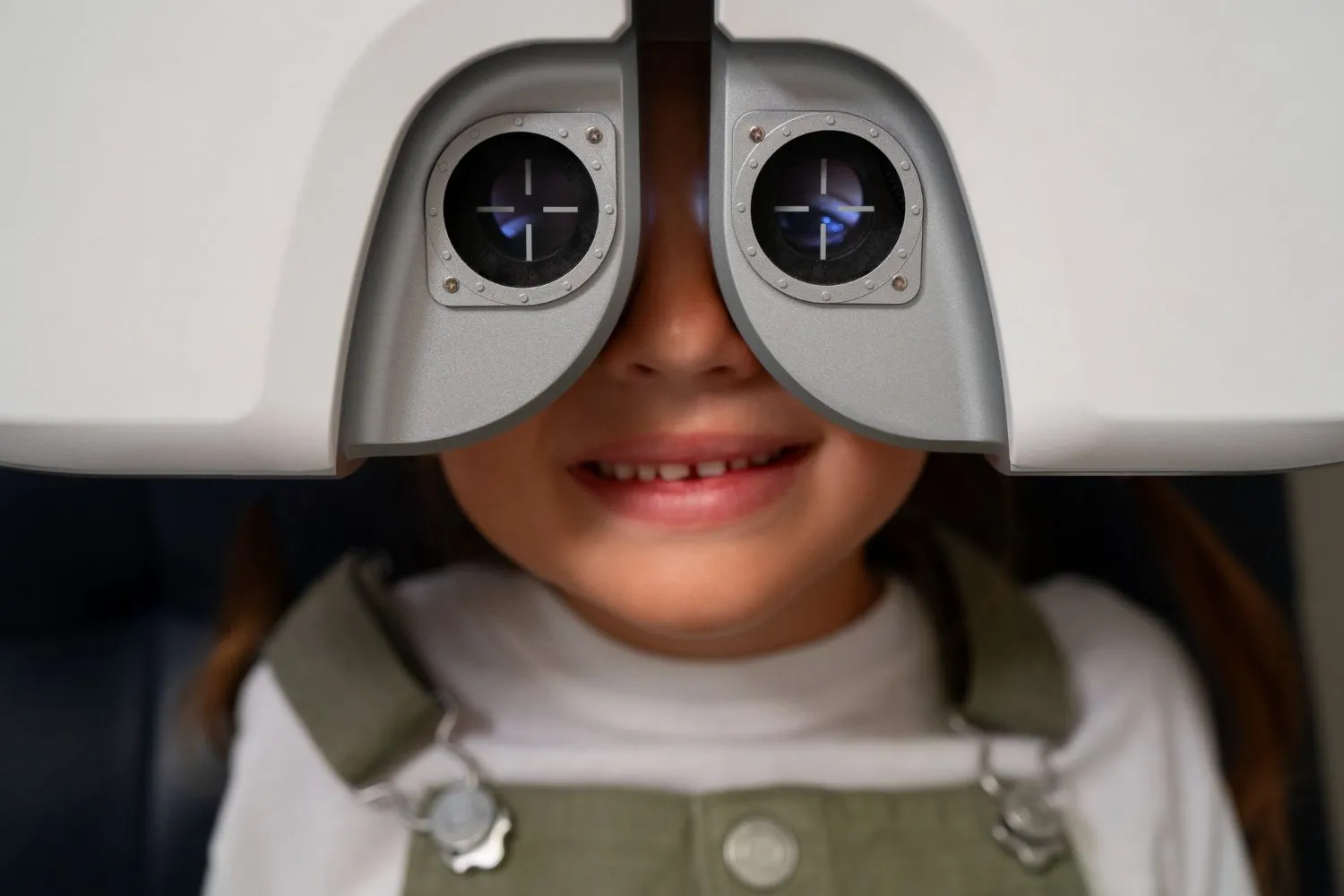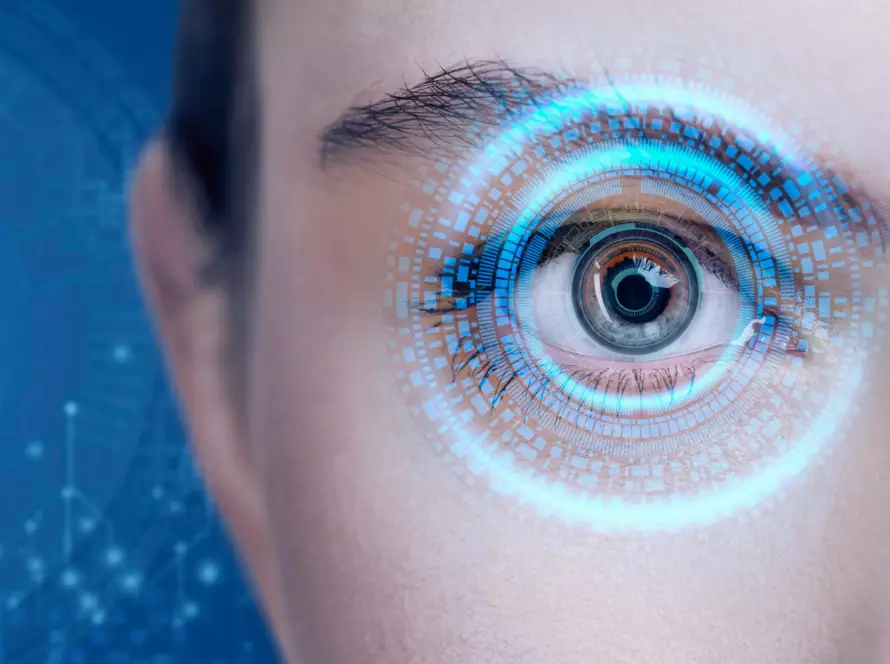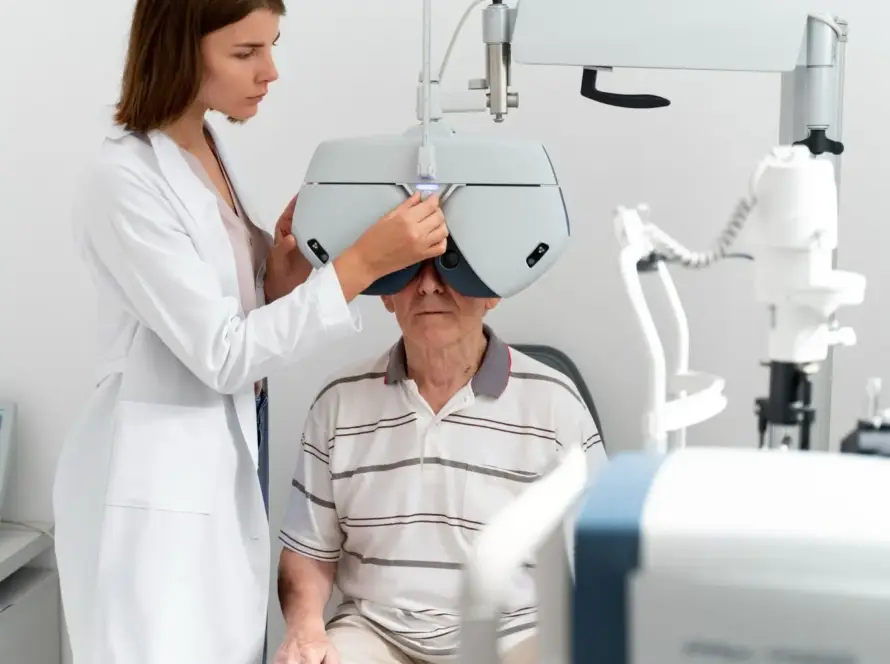In the digital age, blue light has become a ubiquitous presence in daily life, emitted from screens, artificial lighting, and other sources. While much of the discussion around blue light has centered on its effects on adults, it is increasingly important to consider its impact on children’s eye health. Children are exposed to blue light from various digital devices from a young age, raising concerns about potential effects on their vision and overall well-being.
Understanding Blue Light
Blue light is part of the visible light spectrum and is characterized by short wavelengths and high energy. It is emitted by digital screens, including smartphones, tablets, computers, and LED lighting. Unlike other types of light, blue light penetrates deeper into the eye, reaching the retina, which can potentially lead to various health concerns.
Effects of Blue Light on Children’s Eye Health
Digital Eye Strain
Digital eye strain, also known as computer vision syndrome, is a common condition associated with prolonged screen use. Symptoms include eye fatigue, dryness, irritation, and difficulty focusing. Children who spend extended periods on digital devices are at risk of developing digital eye strain, as their eyes may not yet be fully adapted to handle the prolonged exposure to blue light and screen glare.
Potential for Long-Term Damage
Research into the long-term effects of blue light exposure is ongoing. Some studies suggest that excessive blue light might contribute to retinal damage over time, potentially increasing the risk of conditions like age-related macular degeneration (AMD). Although these conditions are typically associated with aging, early exposure to high levels of blue light may exacerbate risks in the future. As children’s eyes are still developing, they might be more vulnerable to potential damage from blue light.
Disruption of Sleep Patterns
Blue light exposure, particularly before bedtime, can interfere with the production of melatonin, a hormone that regulates sleep. Children who use digital devices late into the evening may experience disruptions in their sleep patterns, leading to difficulties falling asleep, reduced sleep quality, and fatigue. Proper sleep is crucial for overall health and development, making this a significant concern.
Impact on Visual Development
Prolonged screen time can affect the visual development of children. The constant need to focus on close-up screens may strain the eye muscles and contribute to conditions such as nearsightedness (myopia). While blue light itself may not directly cause myopia, excessive screen use associated with blue light exposure may contribute to its progression.
Strategies for Protection

Screen Time Management
Limiting screen time is one of the most effective strategies for reducing blue light exposure. The American Academy of Pediatrics recommends setting clear boundaries on-screen use, encouraging breaks, and promoting alternative activities that do not involve screens.
Blue Light Filters and Glasses
Blue light-filtering lenses and screen protectors can reduce the amount of blue light that reaches the eyes. While evidence of their effectiveness is still developing, they may provide additional comfort and protection, especially for children who spend significant time on digital devices.
Good Screen Habits
Encouraging good screen habits can help mitigate the effects of blue light. This includes maintaining proper screen distance (at least an arm’s length away), ensuring adequate lighting in the room, and using the 20-20-20 rule—taking a 20-second break every 20 minutes to look at something 20 feet away.
Promoting Outdoor Activities
Encouraging children to spend time outdoors can help reduce reliance on digital screens and promote eye health. Natural light and outdoor activities contribute to overall well-being and may help balance the effects of blue light exposure.
Regular Eye Check-ups
Regular eye examinations are important for monitoring eye health and catching any potential issues early. Eye care professionals can provide guidance on managing blue light exposure and recommend appropriate measures based on individual needs.
Conclusion

The impact of blue light on children’s eye health is a growing concern in our digital world. While research is still ongoing, it is clear that excessive blue light exposure can lead to digital eye strain, potential long-term damage, sleep disruptions, and impacts on visual development. By adopting strategies such as managing screen time, using blue light filters, and promoting healthy screen habits, parents and caregivers can help protect children’s eye health and ensure their overall well-being. As technology continues to evolve, ongoing research and awareness will be crucial in understanding and mitigating the effects of blue light on future generations.
Beyond LASIK, Beyond SMILE



